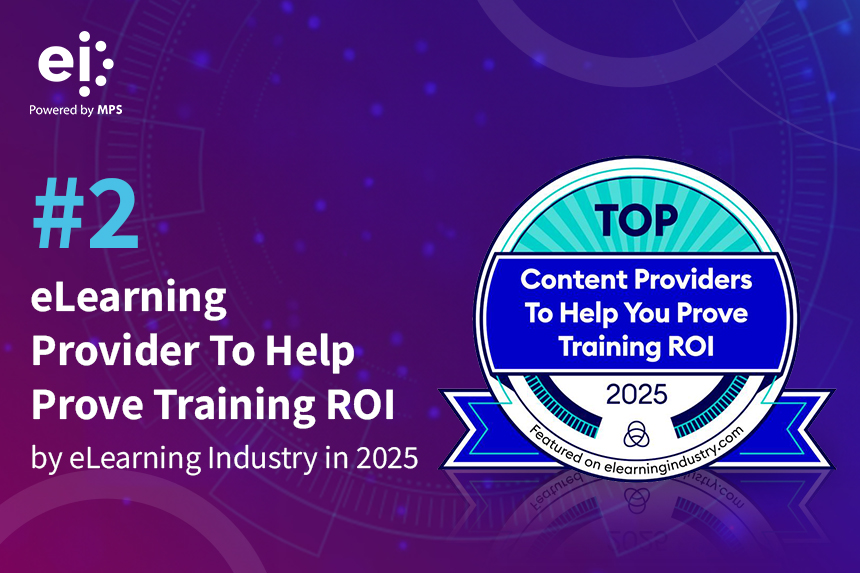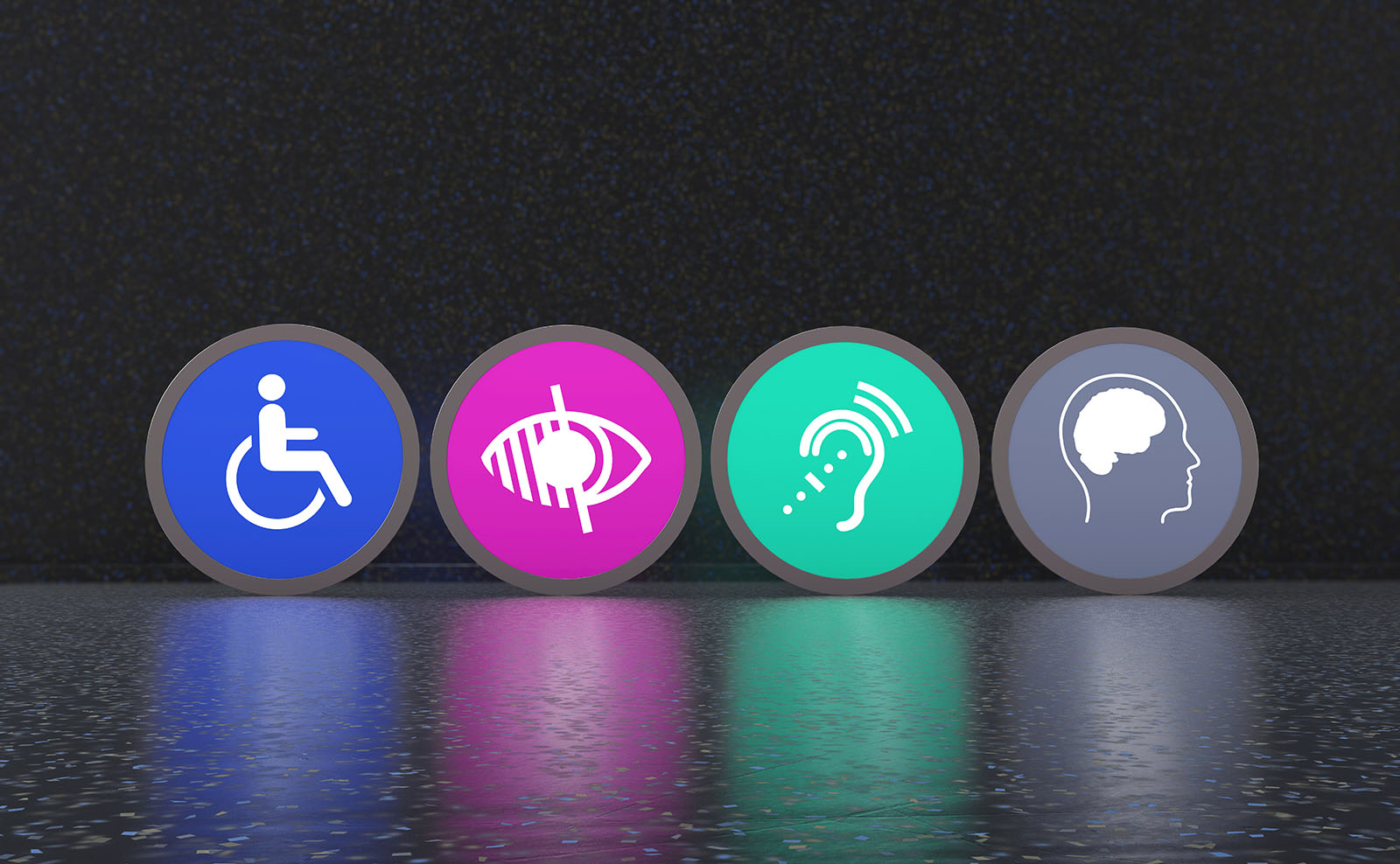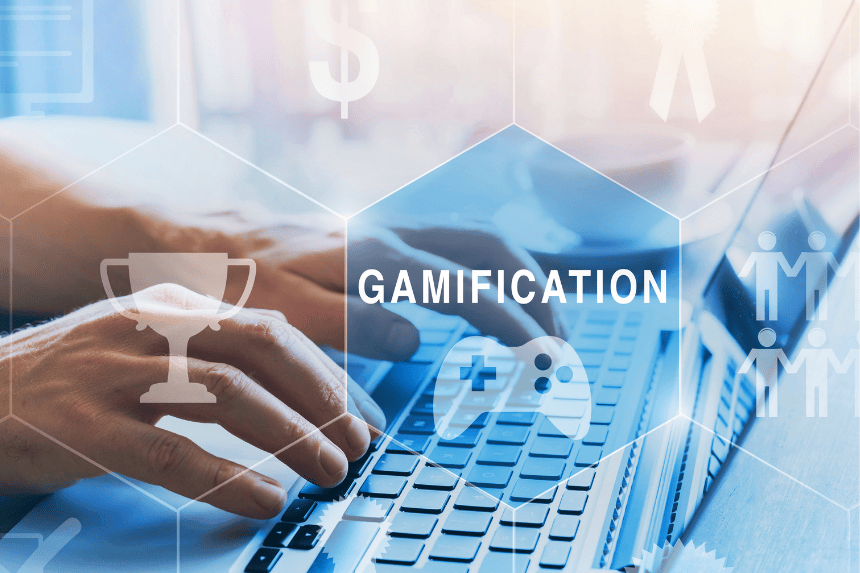
In the dynamic world of eLearning, gamification has emerged as a transformative strategy in L&D, bolstering the learning journey with interactive and compelling game-like elements. This article explores some of the key benefits of Gamification in eLearning. From stimulating engagement to fostering lasting knowledge retention, gamification is reshaping the learning landscape.
What is Gamification?
Gamification in eLearning is the integration of game mechanics, like points, badges, leaderboards, and progress tracking, into non-game environments, such as learning or business settings, to enhance user engagement and participation. It capitalizes on the human psychological predisposition to engage in gaming. The concept extends beyond the realm of mere entertainment; it’s about applying game-design thinking and elements to various aspects of life, making them more interactive and enjoyable. Gamification in eLearning taps into the fundamental desires for recognition, achievement, competition, and collaboration, effectively transforming routine tasks into more engaging and rewarding experiences.
Why Gamification Works – The Science Behind Gamification in L&D and eLearning
Gamification in eLearning capitalizes on the cognitive and emotional aspects of learning by integrating game mechanics into L&D strategies. This approach is backed by several psychological theories and neuroscientific findings:
- Cognitive Evaluation Theory: Suggests that intrinsic motivators such as autonomy, mastery, and purpose enhance the quality of learning. Gamification in eLearning naturally incorporates these elements, making eLearning intrinsically rewarding.
- Neuroscience and Dopamine Release: Achievements in games trigger dopamine release, a neurotransmitter associated with pleasure and learning, which reinforces continued engagement and information retention.
Gamification aligns with established educational theories in the context of L&D and eLearning:
- Constructivist Learning Theory: Proposes that learners construct knowledge through experiences. Gamification in eLearning provides these interactive experiences.
- Experiential Learning: Encourages learners to learn through action, reflection, and experimentation, a process that is readily facilitated by gamified elements.
How Gamification Drives Engagement and Learning
Rather than being a gimmick, gamification in eLearning supports deep instructional goals. It transforms learning environments into interactive, motivating experiences that promote behavior change, critical thinking, and skill application. By simulating real-world decision-making and reinforcing knowledge through repetition and challenge, gamification helps:
- Combat digital fatigue and cognitive overload
- Increase time-on-task and voluntary participation
- Connect abstract knowledge to real-world outcomes
Gamification also encourages learners to experiment, fail safely, and improve, which is an essential condition for growth and performance readiness.
How Gamification Improves Corporate Training and Performance
Gamification in eLearning enhances corporate training programs by aligning learning with performance goals. Interactive challenges, scenario-based modules, and rewards systems foster active engagement. As employees apply knowledge in simulated environments, it improves job readiness, accelerates time-to-competency, and encourages better decision-making.
Additional advantages of gamification in eLearning include:
- Stronger KPI Alignment: Gamified goals often reflect real-world metrics like sales targets, compliance scores, or customer satisfaction.
- Higher Completion Rates: Learners are more likely to complete modules when they feel ownership over progress.
- Improved Retention: Spaced repetition and interactive feedback loops reinforce learning over time.
How Gamification Enhances Motivation Through Design
Gamification in eLearning turns passive learning into active exploration. With elements like progress tracking, visual cues, challenges, and recognition, it taps into learners’ sense of purpose and achievement, especially in longer or more complex training modules. When thoughtfully designed, gamification draws on principles from behavioral psychology and motivational theory to sustain attention and effort throughout the learning journey.
Key engagement drivers include:
- Instant Feedback: Learners get real-time responses, helping them adjust without fear of formal evaluation.
- Progress Mechanics: Points, streaks, and progress bars provide visual affirmation and reinforce the sense of mastery.
- Autonomy and Choice: Learners are more engaged when they can choose their learning paths or unlock new content through performance.
- Peer Competition: Friendly contests and leaderboards make learning social and build accountability.
- Mini Goals and Milestones: Breaking learning into smaller wins helps maintain momentum over long modules.
The Role of Gamification in Learning Enhancement
Successful learning combines three essential elements:
- 70% of learning comes through hands-on experiences, workplace tasks, and real-world problem-solving
- 20% from feedback and from observing and working with peers and role models
- 10% from formal training
Take a look at this diagram on the techniques used in learning design approaches and their relationship to retention of learning:

Contemporary learning models underscore the importance of experiential learning, which constitutes a substantial portion of knowledge acquisition. Gamification enriches this model by:
- Stimulating a spirit of healthy competition.
- Fostering a robust sense of accomplishment.
- Crafting captivating learning experiences that pave the way for behavioral transformation.
- Inspiring learners to proactively engage with content, thereby driving intentional actions and influencing positive behavior patterns.
Use Cases of Gamification in L&D
The application of gamification as a significant tool in Learning and Development (L&D) is evident in various use cases:
- Skills Training: Implementing gamified scenarios to simulate real-world challenges, helping learners to develop specific skills in a safe, controlled environment.
- Onboarding Processes: Using game elements to make the onboarding of new employees more engaging and informative, facilitating a smoother integration into the company culture and processes.
- Compliance Training: Transforming mandatory compliance traininginto an interactive experience, encouraging better engagement and understanding of essential regulations and policies.
- Soft Skills Development: Leveraging role-playing games and simulations to enhance soft skills like communication, teamwork, and leadership in an interactive manner.
- Continuous Professional Development: Encouraging ongoing learning and development through gamified challenges and rewards, fostering a culture of continuous improvement and lifelong learning.
- Performance Management: Incorporating gamification in performance assessments to motivate employees to achieve specific goals and objectives, making the process more transparent and rewarding.
- Employee Engagement and Motivation: Boosting engagement and motivationby introducing elements of competition, recognition, and achievement into L&D programs.
Benefits of Gamification
Gamification in eLearning has revolutionized the L&D landscape, delivering a myriad of benefits not only to learners but also to the organizations behind their development. Here’s how gamification creates a win-win situation for all involved:
For Learners:
- Increases Engagement and Motivation: Gamification transforms traditional learning content into interactive challenges, making the process more exciting and engaging.
- Encourages Active Participation: Interactive elements like quizzes and leaderboards prompt learners to take an active role in their learning journey.
- Fosters Achievement and Progress: The achievement system in gamification, through badges and awards, helps learners track their progress and feel accomplished.
- Enhances Critical Thinking: Game-based problem-solving scenarios cultivate analytical skills, preparing learners for real-life challenges.
- Boosts Confidence: Mastery of gamified tasks builds self-assurance in learners’ abilities to tackle complex subjects.
- Encourages Risk-taking: The low-stakes environment of gamification encourages learners to explore and experiment without fear of failure.
- Personalizes Learning: Adaptive learning paths in gamification cater to individual learner’s pace and style.
- Improves Memory Retention: The interactive and repetitive nature of games helps in better information recall.
For L&D Departments:
- Provides Measurable Data: Gamification systems offer analytics on learner engagement and success rates.
- Allows Real-time Adjustments: Immediate feedback from gamified activities enables quick course corrections to optimize learning outcomes.
- Encourages Peer Learning: Multiplayer aspects and discussion boards within gamified learning foster collaborative skills.
- Facilitates Behavior Analysis: Learner interaction with games provides insights into preferences and behaviors.
- Promotes Continuous Learning: The addictive nature of games can instill lifelong learning habit.
- Reduces Costs: Digital gamification platforms can be more cost-effective than traditional in-person training.
- Streamlines Onboarding: Gamification makes the onboarding process faster and more enjoyable for new hires.
- Enhances L&D Reputation: Successful gamification strategies can raise the profile and perceived value of L&D within an organization.
For the Business:
- Drives Competitive Advantage: Well-trained employees through gamification become a strategic asset.
- Increases Employee Retention: Engaging learning experiences can result in higher job satisfaction.
- Improves Performance: Gamification aligns learning outcomes with practical job performance improvements.
- Enhances Adaptability: Employees trained through gamification adapt more readily to change.
- Encourages Innovation: Gamified learning often involves creative problem-solving that can lead to innovative ideas.
- Leads to Better Customer Satisfaction: Skills gained through gamified learning translate to improved customer service.
Conclusion:
Embracing gamification in eLearning transcends beyond mere fun; it’s a strategic move towards immersive, impactful learning experiences. With its proven ability to enhance memory, motivate learners, and drive business performance, gamification stands as a cornerstone in modern L&D programs. As we adapt to evolving learning needs, gamification is not just a trend but an essential driver of effective and future-ready L&D programs.
Frequently Asked Questions (FAQs)
- What are the benefits of combining gamification with microlearning?
Combining gamification with microlearning increases engagement by delivering short, focused content with interactive elements like points or challenges. This helps learners stay motivated while absorbing information quickly.
- How does personalization in gamification improve user experience?
Personalization customizes challenges and rewards to individual learning paths. This makes gamified experiences more relevant, helping learners stay engaged and improving overall satisfaction.
- What are the advantages of gamification for sales teams?
Gamification helps sales teams sharpen product knowledge, improve customer interactions, and practice objection handling through simulations and quizzes. It also fosters healthy competition through leaderboards and rewards, boosting motivation and performance.
- What are the long-term benefits of gamification in eLearning?
Long-term benefits include improved knowledge retention, stronger learner motivation, and the development of continuous learning habits, all of which contribute to high performance and adaptability.
- What are the advantages of using gamification in compliance training?
Gamification makes compliance training more interactive and less tedious. By turning mandatory modules into engaging challenges, it boosts completion rates and understanding of critical policies.



